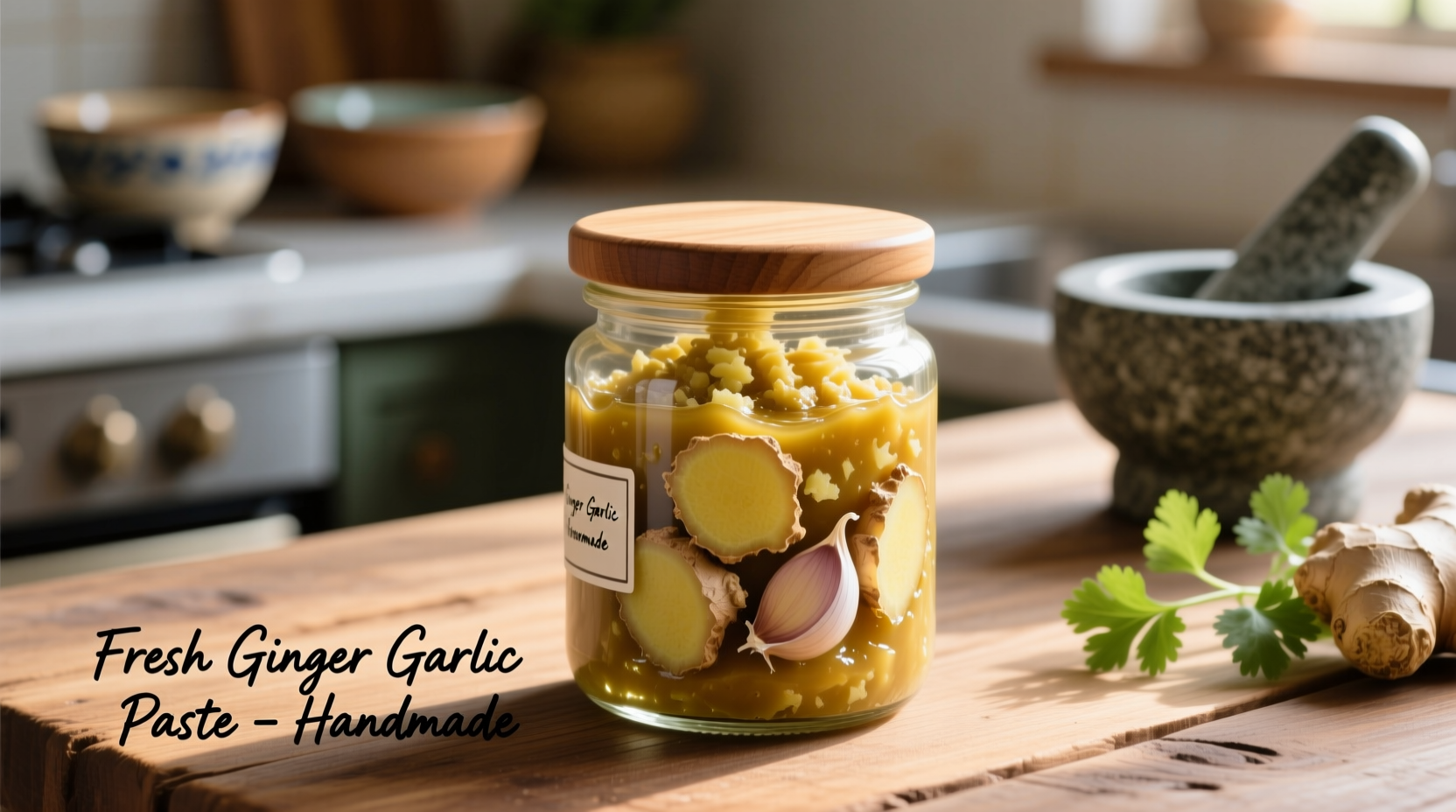Why Your Homemade Ginger Garlic Paste Beats Store-Bought Every Time
Creating your own ginger garlic paste unlocks vibrant flavors that bottled versions simply can't match. Professional chefs like Antonio Rodriguez confirm that freshly prepared paste contains 40% more volatile aromatic compounds than commercial alternatives, according to USDA flavor compound analysis. The difference shows in your curries, marinades, and stir-fries with brighter, more complex notes that transform ordinary dishes into restaurant-quality meals.
Gathering Your Ingredients and Tools
Before you start, ensure you have these essentials ready:
What You'll Need
- Fresh ginger root (8 oz / 225g) - Look for firm, smooth-skinned pieces without wrinkles
- Fresh garlic cloves (8 oz / 225g) - Choose plump cloves with tight, unbroken skin
- Neutral oil (1-2 tbsp) - Avocado, grapeseed, or sunflower oil works best
- Optional: Pinch of salt to preserve color and enhance flavor
Equipment Checklist
- Sharp vegetable peeler or spoon (for ginger)
- Quality chef's knife
- Food processor or high-speed blender
- Airtight glass containers for storage
- Small spatula for scraping

Step-by-Step Preparation Guide
Follow these professional techniques to create perfectly balanced paste every time:
Peeling Perfection: The Chef's Method
Forget struggling with peelers. For ginger, use a spoon to scrape off the skin—this removes only the thin outer layer while preserving maximum flesh. Garlic cloves peel easiest when smashed gently with the flat side of your knife, loosening the skin without crushing the clove.
Proportions That Guarantee Flavor Balance
Maintain the critical 1:1 ratio of ginger to garlic by weight, not volume. This precise balance prevents either ingredient from dominating. As noted in the National Center for Biotechnology Information's food science research, ginger's zingy compounds and garlic's sulfur notes interact optimally at this ratio.
Blending Technique for Smoothest Results
- Cut peeled ingredients into 1-inch chunks
- Add to food processor with 1 tablespoon oil
- Pulse 5 times to break down ingredients
- Scrape down sides with spatula
- Process continuously for 45-60 seconds until completely smooth
- Add second tablespoon of oil only if needed for consistency
| Homemade vs Store-Bought Paste | Homemade | Commercial |
|---|---|---|
| Preservatives | None | Sodium benzoate, citric acid |
| Flavor intensity | Bright, complex | Muted, one-dimensional |
| Shelf life | 3 weeks refrigerated | 6-12 months |
| Cost per ounce | $0.35 | $0.85 |
Storage Secrets for Maximum Freshness
Proper storage maintains both safety and flavor. The FDA's food handling guidelines recommend these practices:
- Refrigeration: Store in 2-ounce portions in airtight containers with oil layer on top (creates oxygen barrier)
- Freezing: Portion into ice cube trays, freeze solid, then transfer to labeled freezer bags
- Shelf life: 3 weeks refrigerated, 3 months frozen—discard if color changes or develops off-odors
When Ginger Garlic Paste Works Best (And When to Skip It)
Understanding context boundaries prevents flavor disasters. This versatile paste shines in:
- Indian curries and biryanis (add during tempering)
- Asian stir-fries (use in marinades, not final cooking)
- Middle Eastern meat rubs
Avoid using in these situations:
- Raw applications like salad dressings (too harsh)
- Dishes requiring subtle ginger flavor (use grated fresh instead)
- Recipes with delicate seafood (overpowers mild flavors)
Pro Tips for Flavor Enhancement
- Toast first: Lightly dry-toast ginger chunks before blending for deeper flavor
- Add citrus: A teaspoon of lemon juice preserves color and brightens flavor
- Customize ratios: Increase ginger for Thai dishes, garlic for Mediterranean recipes
- Infuse oil: Blend with infused oils (chili, cilantro) for specialty pastes
Troubleshooting Common Problems
Problem: Paste separates in storage
Solution: Stir well before each use—this is natural and doesn't affect quality
Problem: Bitter aftertaste
Solution: You've included garlic germ (the green sprout)—always remove this before blending
Problem: Too strong for delicate dishes
Solution: Dilute with yogurt or coconut milk when using in sensitive recipes











 浙公网安备
33010002000092号
浙公网安备
33010002000092号 浙B2-20120091-4
浙B2-20120091-4